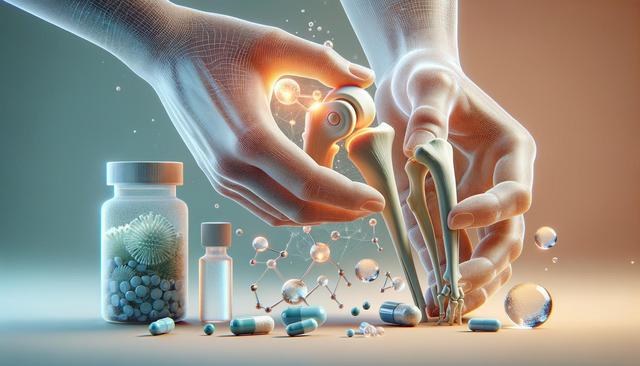Understanding the Role of Injections in Arthritis Management
Injections play a significant role in modern arthritis management by delivering medication directly into affected joints. This localized approach helps reduce inflammation, ease pain, and improve joint function. Unlike oral medications, which affect the entire body, injections focus treatment precisely where it’s needed. For individuals with moderate to severe arthritis, especially when oral medications or physical therapy are not sufficient, injections can offer meaningful relief. This method is especially helpful in conditions such as osteoarthritis, rheumatoid arthritis, and gout, where joint inflammation can become chronic and debilitating.
Several factors determine whether a patient is a good candidate for injection therapy. These include the type of arthritis, severity of symptoms, and whether other treatments have provided adequate relief. In consultation with a healthcare provider, patients can explore how injections fit into a broader treatment strategy that may include lifestyle modifications, exercise, and medication. Understanding The Role of Injections in Arthritis Management is essential for patients looking to make informed decisions about their care.
Types of Injections Used in Arthritis Treatment
There are several Types of Injections Used in Arthritis Treatment, each with unique properties and targeted benefits. Choosing the right injection depends on the arthritis type and patient needs. Here are some commonly used options:
- Corticosteroid Injections: These are widely used to reduce inflammation quickly. They provide temporary relief and are often used for flare-ups.
- Hyaluronic Acid Injections: Often used for knee osteoarthritis, these mimic the natural fluid in joints and help lubricate and cushion them.
- Platelet-Rich Plasma (PRP) Injections: Derived from the patient’s own blood, PRP injections aim to promote tissue healing and reduce inflammation.
- Biologic Injections: These target specific immune system components and are typically used in autoimmune forms of arthritis like rheumatoid arthritis.
Each injection type has its indications, benefits, and limitations. A healthcare provider can help determine which type is most appropriate based on a patient’s specific diagnosis and treatment history.
What to Expect After Joint Injection Therapy
Understanding What to Expect After Joint Injection Therapy can help patients prepare for the treatment process and recovery. Typically, the procedure is performed in a clinical setting and takes just a few minutes. After the injection, patients may experience mild soreness or swelling at the injection site for a day or two. This is normal and usually resolves on its own.
Relief from symptoms varies depending on the type of injection. For instance, corticosteroid injections often provide relief within 24 to 48 hours, while hyaluronic acid or PRP injections may take longer to show benefits. In some cases, multiple injections over a period of time may be needed to maintain relief. It’s important to monitor any side effects and report unusual symptoms to a healthcare professional right away.
Post-treatment care may include:
- Avoiding strenuous activity for 24–48 hours
- Applying ice to reduce swelling
- Monitoring for signs of infection, such as redness or fever
Having clear expectations helps patients stay engaged in their care and communicate effectively with their providers.
Exploring Targeted Joint Pain Relief Options
There are numerous Targeted Joint Pain Relief Options available today, and injections are just one part of a broader landscape. When injections are used strategically, they can help patients manage pain and maintain mobility without relying solely on systemic medications. These options are particularly valuable for those with joint-specific symptoms, such as persistent knee or shoulder pain that doesn’t respond well to oral drugs.
In addition to injections, targeted relief can also involve:
- Topical treatments applied directly to the skin over the joint
- Physical therapy focused on strengthening the muscles around the joint
- Assistive devices to reduce joint strain, such as braces or orthotics
Combining these strategies with injection therapy can enhance outcomes and reduce the need for more invasive procedures, such as surgery. Personalized treatment plans based on joint location, severity, and lifestyle can lead to more effective and sustainable results.
Advancements in Injection-Based Therapies
Recent years have seen significant Advancements in Injection-Based Therapies that are reshaping the way arthritis is treated. Innovations in biologic and regenerative medicine, such as stem cell therapy and enhanced PRP formulations, offer promising avenues for long-term joint health. These therapies aim not only to relieve symptoms but also to support tissue repair and possibly slow disease progression.
Improvements in imaging technology, such as ultrasound-guided injections, have also increased the precision and efficacy of treatments. By ensuring that the medication reaches the exact location of inflammation, outcomes are often improved, and side effects minimized. Additionally, ongoing research is exploring new injectable compounds that target specific inflammatory pathways involved in arthritis.
While not all of these emerging treatments are widely available or suitable for every patient, they represent the future direction of arthritis care. Staying informed about these developments allows patients and healthcare providers to make proactive choices and potentially benefit from cutting-edge options as they become accessible.
Conclusion: Empowering Patients with Informed Choices
For individuals managing arthritis, having access to a range of targeted treatments can make a meaningful difference in daily life. Injections offer a valuable tool for reducing pain and inflammation in a focused way, and understanding their role enables patients to make informed decisions. From learning about the Types of Injections Used in Arthritis Treatment to knowing What to Expect After Joint Injection Therapy, education is key to effective management.
As Advancements in Injection-Based Therapies continue to emerge, patients have more choices than ever before. By working closely with healthcare providers, exploring Targeted Joint Pain Relief Options, and staying informed about The Role of Injections in Arthritis Management, individuals can take meaningful steps toward improved joint health and a better quality of life.




Leave a Reply